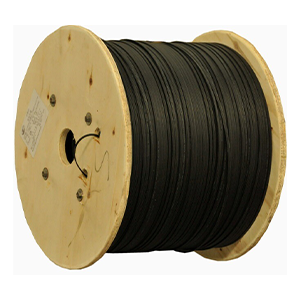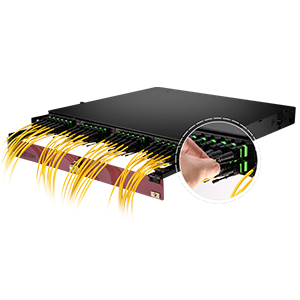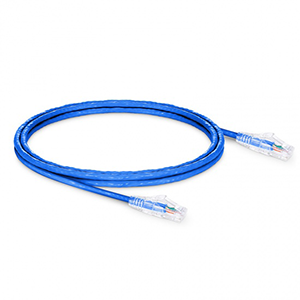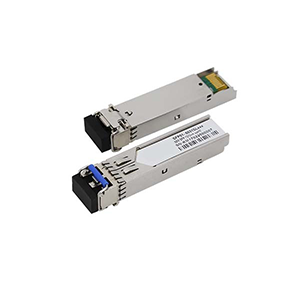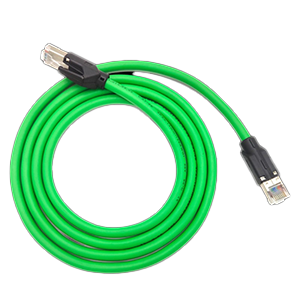Fiber optic cables undoubtedly play an important role in communication networks. This article will focus on the characteristics and uses of 6-core fiber optic cables. We will first describe the general physical structure of fiber optic cables and explain the functions of each component. Next, we will explain the specific physical structure of 6-core fiber optic cables and analyze their advantages over other fiber counts.
We will list the key technical indicators of 6-core fiber optic cables, such as bandwidth, loss, etc., and explore how these parameters affect their transmission performance. In addition, we will introduce the typical applications of 6-core fiber optic cables in network construction and explain their applicability in different scenarios. Finally, we will describe the correct installation methods and precautions for 6-core fiber optic cables and provide suggestions for daily maintenance and troubleshooting.

Basic composition of fiber optic cables
Let me give you a detailed introduction to the basic physical composition of fiber optic cable and the functions of each component.
General physical structure of optical fiber cable:
Optical fiber cable is usually composed of the following main components:
(1) Optical fiber core:
- It is the transmission medium of optical signal, made of quartz glass or plastic.
- There are two different types of optical fiber: single-mode optical fiber and multi-mode optical fiber.
(2) Optical fiber cladding:
- Located on the periphery of the optical fiber core, it plays a role in limiting the transmission of optical signals.
- Material is usually silicone resin or special glass.
(3) Buffer layer:
- Located on the outer layer of the optical fiber cladding, it plays a role in protecting the optical fiber core.
- Material is usually plastic or polymer.
(4) Strengthening layer:
- Located outside the buffer layer, it provides mechanical strength and tensile bearing capacity.
- Generally woven with steel wire or special synthetic fiber.
(5) Sheath:
- Located on the outermost layer, it provides integrity, weather resistance and protection.
- The material can be plastic, metal or rubber.
Functions of various components of optical fiber cable:
(1) Optical fiber core:
- It is the transmission core of the optical signal and determines the transmission performance of the optical fiber.
- Different types of optical fiber cores have different transmission characteristics.
(2) Optical fiber cladding:
- Limits the propagation of optical signals in the core through the difference in refractive index.
- Ensures that optical signals are transmitted in the optical fiber in a low-loss manner.
(3) Buffer layer:
- Protects the optical fiber core from damage by external environmental factors.
- Improve the optical fiber’s ability to withstand mechanical stress such as bending and extrusion.
(4) Strengthening layer:
- Bears the main tensile stress of the optical fiber cable and enhances the overall mechanical strength.
- Ensures that the optical fiber will not break during laying and use.
(5) Sheath:
- Provides weather resistance and protection for the entire optical fiber cable.
- Enables optical fiber cables to operate stably and for a long time in harsh environments.
In short, the layered structure of optical fiber cables and the reasonable design of various components ensure the comprehensive performance of optical fiber in terms of transmission, protection and mechanical strength.
Features of 6-core optical fiber cables
Let me introduce you to the specific physical structure of 6-core optical fiber cables and its advantages over other core counts.
Physical structure of 6-core optical fiber cables:
(1) Number of optical fiber cores:
- 6-core optical fiber cables contain 6 independent optical fiber cores.
- Usually single-mode 9/125μm or multi-mode 50/125μm optical fibers are used.
(2) Optical fiber arrangement:
- The 6 optical fiber cores are arranged symmetrically in a circular shape at the center of the cable.
- There is a certain gap and protective buffer layer between each optical fiber core.
(3) Buffer and reinforcement layer:
- Each optical fiber core is protected by a buffer layer.
- The overall cable also has a reinforcement layer and a sheath to provide mechanical strength and protection.
(4) Dimensions:
- The diameter of a 6-core optical fiber cable is usually around 8-10mm.
- It is slightly larger than a single-core or 4-core cable, but still maintains a compact size.
Advantages of 6-core optical fiber cable:
(1) Flexible capacity:
- The 6-core cable can provide 6 independent transmission channels.
- It meets the needs of medium-sized user access or backbone network transmission.
(2) Mechanical strength:
- The 6-core cable has a more compact overall structure and better tensile strength.
- It can better withstand the mechanical stress during cable laying and use.
(3) Convenient laying:
- The size of the 6-core cable is relatively compact, which is convenient for installation and wiring management.
- Compared with 8-core or 12-core cables, it is more flexible and convenient to operate.
(4) Economical:
- The material cost and manufacturing cost of the 6-core cable are both lower.
- Compared with high-core cables, the 6-core product has a better cost-effectiveness.
(5) Wide application:
- 6-core fiber optic cable is suitable for a variety of application scenarios such as home, enterprise and metropolitan area network.
- It can meet various fiber optic deployment requirements from home to trunk network.
In short, 6-core fiber optic cable has outstanding advantages in capacity, mechanical performance, installation convenience and economy, and is a common choice for fiber optic network deployment.
Technical parameters of 6-core fiber optic cable
Let me introduce you to the key technical parameters of 6-core fiber optic cable in detail and how these parameters affect its transmission performance.
Main technical indicators of 6-core fiber optic cable:
(1) Fiber type:
- 6-core fiber optic cable can use single-mode 9/125μm or multi-mode 50/125μm fiber.
- Different types of optical fibers have different transmission characteristics and application scenarios.
(2) Bandwidth:
- The bandwidth of single-mode optical fiber can usually reach more than 10Gbps.
- The bandwidth of multimode optical fiber is about 1Gbps, which is suitable for medium and short distance transmission.
(3) Optical fiber loss:
- The typical loss of single-mode optical fiber is 0.2-0.3dB/km.
- The loss of multimode optical fiber is about 0.4-0.5dB/km.
(4) Bending loss:
- Optical fiber has high requirements for bending radius. Too small bending radius will lead to large bending loss.
- The structural design of 6-core cable can effectively control bending loss.
(5) Tensile strength:
- Six-core cables usually use a steel wire or synthetic fiber reinforcement layer.
- It has a high tensile strength and can withstand the tension during cable laying.
(6) Protective performance:
- The outer sheath of the six-core cable can provide good weather resistance and protection.
- It is suitable for fiber optic network deployment under various environmental conditions indoors and outdoors.
The impact of key parameters on transmission performance:
(1) Fiber type determines transmission distance:
- Single-mode fiber is suitable for long-distance transmission, and multi-mode is suitable for medium and short distances.
- It is critical to select the appropriate fiber type according to the transmission distance.
(2) Bandwidth and loss affect transmission rate:
- The higher the bandwidth and the lower the loss, the greater the amount of data transmitted per unit time.
- This determines the ability of 6-core cable to carry high-speed services.
(3) Bending performance affects laying flexibility:
- Good bending performance makes 6-core cable more flexible in the wiring process.
- It is conducive to the smooth laying of cables in various complex environments.
(4) Mechanical strength ensures transmission reliability:
- Strong tensile strength and protective performance ensure long-term stable transmission of the cable.
- Improve the overall reliability and service quality of the 6-core fiber optic network.
In short, the various technical parameters of 6-core fiber optic cable will have a certain impact on its transmission performance. For different application scenarios, the key to ensuring efficient transmission of 6-core cables is to reasonably select the fiber type, control loss, and ensure mechanical strength.
Main application scenarios of 6-core fiber optic cables
Let me introduce you in detail the typical application scenarios of 6-core fiber optic cables in network construction and its applicability in different applications.
Typical application scenarios of 6-core fiber optic cables:
(1) Home/SME optical access:
- 6-core cables can meet the fiber optic access needs of single houses or small businesses.
- Six independent fiber optic interfaces are provided through terminal equipment to support multi-user access.
(2) Campus/park backbone network:
- 6-core cables can be used for backbone transmission of small regional networks such as campuses and industrial parks.
- Provide sufficient fiber resources to carry high-speed Internet services in the region.
(3) Metro/support network trunk:
- 6-core cable can be used as the backbone transmission medium of the city-level trunk network or support network.
- Use the capacity advantage of 6-core to efficiently carry the business traffic of the metro network.
(4) Small and medium-sized computer room wiring:
- 6-core cable can be used for optical fiber wiring inside small and medium-sized computer rooms or data centers.
- The cable is small in size, which is convenient for installation and management in complex environments inside computer rooms.
(5) Outdoor optical fiber deployment:
- 6-core cable has good protection performance and is suitable for optical fiber network construction in outdoor environments.
- It can be used for optical fiber trunk and branch line deployment in outdoor scenes such as urban roads and electric poles.
Analysis of the applicability of 6-core fiber optic cable:
(1) Moderate capacity:
- 6-core cable provides 6 transmission channels, which can meet the needs of medium-sized networks.
- For application scenarios such as homes and small and medium-sized enterprises, the capacity of 6-core cable is more suitable.
(2) Excellent mechanical properties:
- 6-core cable has a compact structure and strong tensile and bending resistance.
- Suitable for use in complex environments, such as outdoor pipelines and inside computer rooms.
(3) Installation convenience:
- 6-core cable is small in size, easy to install and wire, and for subsequent maintenance and management.
- For small and medium-sized network deployments, 6-core cable operation is more flexible and convenient.
(4) Good economic performance:
- The material and manufacturing costs of 6-core cables are low, and they have a high cost-effectiveness.
- It is suitable for small and medium-sized network construction and meets the application needs of limited budgets.
In short, 6-core fiber optic cables have outstanding advantages in capacity, performance, installation and economy, and are very suitable for the construction of various small and medium-sized fiber optic networks such as homes, enterprises, and campuses. It is one of the important infrastructures for the popularization of fiber-optic broadband.
Installation and maintenance of 6-core fiber optic cables
Let me introduce you in detail the correct installation method and precautions of 6-core fiber optic cables, as well as some suggestions for daily maintenance and fault diagnosis.
Installation method and precautions of 6-core fiber optic cables:
(1) Preparation:
- Carefully check the appearance of the cable to ensure that there is no damage, contamination, etc.
- Prepare the tools needed for installation, such as fiber fusion splicer, optical power meter, etc.
(2) Fiber fusion splicing:
- Strip off each layer of sheath in sequence according to the cable structure to expose the fiber core.
- Use a fiber fusion splicer to precisely connect and fusion-splice the fiber cores.
(3) Fusion quality inspection:
- Use an optical power meter to measure the fiber insertion loss after fusion.
- Ensure that the insertion loss value meets the requirements, otherwise re-fusion is required.
(4) Fiber storage:
- Store the fusion-spliced ??fiber cores neatly in the terminal box or joint box.
- Pay attention to maintaining a suitable bending radius to avoid loss caused by excessive bending.
(5) Cable fixing:
- Use special fixing accessories to reliably fix the cable body on the bracket or channel.
- Prevent the cable from being displaced or damaged due to external forces during operation.
(6) Protective measures:
- For 6-core cables laid outdoors, rain and moisture protection measures should be taken.
- For wiring inside the computer room, attention should be paid to the control of environmental factors such as dust and shock.
Daily maintenance and fault diagnosis of 6-core optical fiber cables:
(1) Regular inspection:
- Regularly check the appearance of the cable and deal with problems in a timely manner.
- Check whether the optical fiber connection point is contaminated or damaged.
(2) Performance monitoring:
- Regularly measure the optical power and optical signal quality of the optical fiber link.
- Timely detect and locate problems of link performance degradation.
(3) Fault location:
- Use equipment such as optical time domain reflectometer (OTDR) to diagnose fiber optic link faults.
- Accurately locate the fault point in the cable to provide a basis for subsequent maintenance.
(4) Repair and treatment:
- According to the type of fault, take measures to repair or replace damaged parts.
- Ensure that the fiber optic link restores normal transmission performance.
(5) Record keeping:
- Properly keep relevant records of installation, maintenance, fault handling, etc.
- Provide a basis for subsequent operation and maintenance, and improve the efficiency of fault prevention and handling.
In short, the installation and maintenance of 6-core fiber optic cables require strict and standardized operating procedures to ensure the long-term stable operation of the fiber optic link. Only by doing daily inspections, performance monitoring and fault diagnosis can the transmission quality of 6-core cables in various applications be guaranteed to the maximum extent.
Summary
High-quality 6-core fiber optic cables are essential for building high-performance communication networks. Our company has long focused on the research and development and application of optical communication technology and has rich industry experience. Our 6-core fiber optic cable products have reached the industry-leading level in terms of optical parameters and mechanical properties, and can meet your demanding needs for network construction.
Whether you need to deploy in a data center, metropolitan area network, or industrial site, we can provide you with customized 6-core fiber optic solutions. At the same time, our professional team will provide you with a full range of technical support, including on-site surveys, solution design, installation guidance and maintenance suggestions. Contact us now to learn more about 6-core fiber optic cables.
6 Core Fiber Optic Cable FAQ
A 6-core fiber optic cable contains six individual optical fiber strands within a single cable jacket or sheath.
6-core fiber optic cables are often used in high-density fiber optic installations, such as data centers, telecommunications networks, and campus backbones.
Key advantages include increased bandwidth and capacity, more efficient use of cable routes and conduits, and simplified cable management compared to using multiple single-fiber cables.
6-core fiber optic cables can utilize both single-mode and multimode fiber types, depending on the network requirements and transmission distances.
6-core cables are available in various configurations, such as 6 single-mode fibers or a combination of single-mode and multimode fibers.
6-core cables can provide higher aggregate bandwidth and support longer transmission distances compared to individual single-fiber cables.
6-core cables may have a round or flat/ribbon cable design and can be terminated with various connector types, such as LC, SC, or MPO/MTP.
Careful cable routing, bend radius control, and the use of appropriate cable management accessories are important for optimal performance.
Potential issues include ensuring proper fiber identification, maintaining cable integrity during installation, and accommodating the larger cable diameter in existing infrastructure.
Ongoing advancements include the use of higher-density fiber counts, the integration of advanced features, and the introduction of new cable designs and installation methods.

